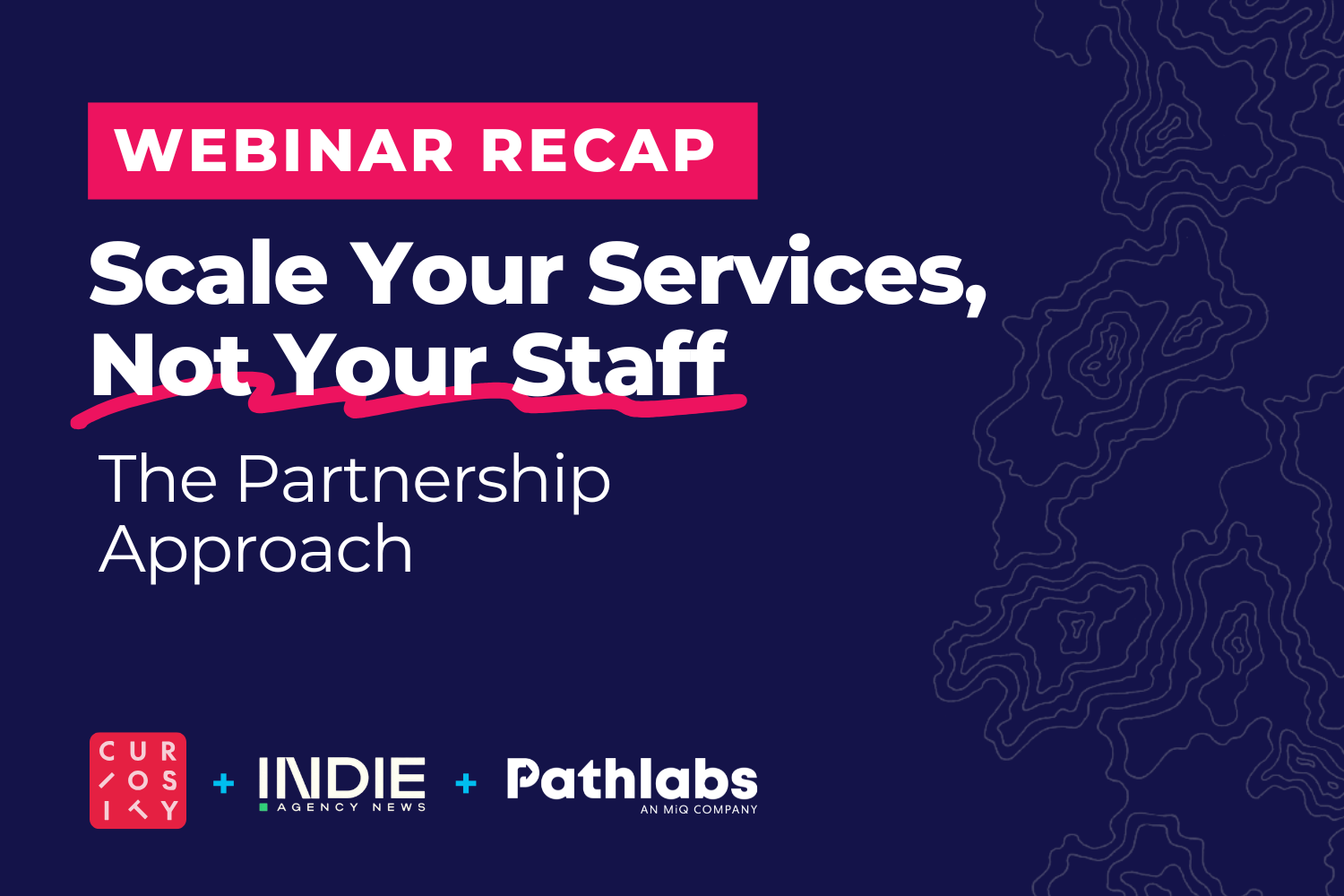Nine PPC Optimization Tips & Strategies for Success
| Pathlabs Marketing |
| August 28, 2023 |
Marketers run various ad campaigns using the pay-per-click model (PPC). They can run these campaigns in the form of display, native, or even social media ads. However, arguably the most popular method associated with PPC is paid search.
In this blog, we hone in on paid search PPC campaigns. We talk about how to optimize them and provide nine tips and strategies to make them perform the best. Let’s dive in.
What Is PPC Optimization?
PPC optimization refers to the process of improving the performance of pay-per-click advertising campaigns.
In the context of paid search, marketers optimize their PPC campaigns by adjusting elements and strategies such as keyword selection, ad content, bidding or targeting parameters, budget, and landing pages. By doing so, they work to develop the most optimal iteration of their campaigns, spurring performance that meets business objectives.
Why Are Paid Search Optimizations Important?
It is essential to optimize paid search PPC campaigns because not every campaign meets its initial performance objectives on the first try. The marketer might define their ad groups incorrectly, target the wrong keywords, or have poor ad copy. To solve this, they must monitor the campaign and make meaningful adjustments to increase its effectiveness.
Paid search is also a very valuable channel, as it reaches many bottom-funnel, high-intent users who are literally typing in keywords that pertain to their interests. There aren’t many other forms of advertising that put ads in front of users when they're most interested in what a brand offers.
The Basics of PPC Optimization
Marketers tend to approach PPC optimization systematically, completing three basic steps: assessment, modification, and optimization.
Assess
The marketer begins by assessing their current campaign performance against their original objectives, determining whether the campaign is performing well or not.
Modify
The marketer modifies the campaign, changing elements like targeting parameters, ad groups, keyword selections, negative keywords, bid tactics, etc.
Optimize
Lastly, the marketer analyzes the modified campaign’s new performance. If the performance improves, the marketer leans into the new strategy that works. If it does not improve, the marketer will repeat the process until they find the right combination of campaign elements that generate the best results.
Following this process will help the marketer move in the right direction toward optimization. However, they should also consider the nine tips and strategies below to make their paid search PPC campaigns stand out.
Nine Advanced PPC Optimization Tips and Strategies
Stay Organized and Keep Track of Changes
Optimization is an iterative process, and marketers must track each iteration: the original campaign setup and performance, the changes they make to optimize, and the new performance. By doing so, they can cross-compare and prove whether the optimization efforts are working or not. They can also revert back to the original versions if needed.
Be Realistic With Keywords
“When optimizing a paid search PPC campaign through keyword modifications, marketers must remember that just because their keyword selection makes sense to them and their team doesn’t necessarily mean it will be the best list for the campaign.
It is always a good idea to experiment with some less obvious keywords as well as utilize the search term report to determine what consumers are searching that is resulting in success. With this data, the marketer can modify and optimize their lists accordingly. ”
Marketers can also consider optimizing keyword strategy by including negative keywords and experimenting with both broad, phrase, or exact match functionalities. The negative keywords will help deter irrelevant user traffic, and the different matching iterations will specify or broaden keyword reach.
Leverage Paid Search Targeting Functionalities
Besides improving keyword selection, another way to optimize PPC campaigns is by experimenting with the targeting parameters paid search platforms offer.
These platforms allow marketers to define geographic regions, languages, demographics, and even affinities their ads will target. This granularity in who the campaign reaches helps ensure the correct users see and click on the search ad.
Choose the Right KPIs and User Actions to Track
“With paid search being a high-value and high-conversion channel, it is a best practice to track the most bottom-funnel conversions and optimize campaigns towards them.”
For instance, if the goal involves users clicking an ad, proceeding to a landing page, and then submitting a form, fixating solely on early funnel metrics like number of clicks or click-through rate can be misleading: clicking an ad doesn't guarantee form completion.
Instead, focus on KPIs like the conversion rate and cost per acquisition through actual form submissions. These metrics align better with the campaign objective and already intuitively indicate that the user clicked on the ad.
Account for User Experience and Landing Pages
Ultimately, users will be picky about which paid search ads they engage with. So, marketers must ensure their ad has high-quality copy and a well-constructed CTA that draws the user in. Incorporating different ad extensions also helps optimize, as these will append more information to the ad to encourage further buy-in from the user.
Thinking about what happens after the target audience clicks on the ad and arrives on the search ad landing page is important too. The landing page should have solid language, interesting visuals, and an easy avenue for further engagement.
“Don’t be afraid to test different landing pages or modify existing landing pages. Often media buyers will select a landing page, and when the campaign does poorly, they blame the keywords, the geos, or the ad copy.
However, sometimes the root cause of the issue may be the landing page that is selected. I think it is great to get in the habit of A/B testing a few different landing page versions before settling on the “best landing page option.”
Know the Different PPC Bidding Options
The platforms marketers use to run paid search ads, such as Google Ads or Amazon Ads, offer various bidding options. Marketers can opt to maximize conversions and clicks or focus on other aspects like impressions.
When making this choice, it's essential to align it with the business objectives to optimize performance. For instance, if the aim is conversions, telling the platform to maximize clicks won’t exactly be the best strategy. Conversely, if the campaign's main goal is increased clicks and views, prioritizing the maximization of conversions might not be suitable.
Know Budget Limitations
A common mistake in paid search PPC marketing is the marketer tries to optimize campaigns or expand growth by increasing the advertising budget, expecting proportional results. However, this is not always the case. Paid search is a single channel that can be expensive and does not always guarantee a certain volume of customers.
So, marketers should strive to find a balance between maximizing their digital goals with search while maximizing their budget and not going over their CPA limit. Search can often work best when it is an integrated piece of the puzzle that serves as a touchpoint in a larger, more integrated funnel.
Be As Self Critical As Possible
“Paid search is a challenging advertising channel, contingent on many factors like ad content, keyword bids, search terms, etc. It can also have a lot of bias, as marketers may think that users will respond to certain relevant keywords or move through the funnel a given way when they are wildly off.
So, whenever I build out a new campaign or feel a little too confident looking at my search performance, I push myself to be as self-critical as possible. I question why I set up the campaign a certain way and what things I have done that could be wrong. Like a school essay, I also have multiple people check my work. ”
By doing so, marketers can make optimization a group effort and strive for better results.
Don’t Give Up!
Paid search PPC campaign optimization is tough. When marketers feel like giving up, they should remember to persevere. Just by taking the time to optimize these campaigns and make them better, they are already moving in a better direction and doing a lot more to their paid search efforts than many other teams are willing to do. These efforts pay off in the long run.
In Conclusion…
In its simplest form, optimization refers to the steps taken by marketers to enhance the effectiveness of their campaigns. They typically achieve this through a structured procedure of assessing performance, making necessary modifications, and then gauging the impact of these changes. If the new outcomes are positive, the marketer will focus more on the successful methods. However, if there's no improvement in performance, the process is repeated: reevaluation, making further modifications, and reviewing the performance repeatedly until they achieve the desired objectives.
This optimization approach is especially crucial in paid search due to the numerous intricate elements marketers need to navigate, experiment with, and refine to achieve optimal performance for their PPC campaigns. Adhering to this optimization process is essential, keeping in mind the nine advanced optimization tips and strategies discussed.













